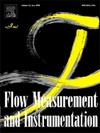Machine learning-based modeling of discharge coefficients in labyrinth sluice gates
IF 2.3
3区 工程技术
Q2 ENGINEERING, MECHANICAL
引用次数: 0
Abstract
A labyrinth sluice gate is a novel design capable of transferring high flow compared to a conventional one owing to its leaf nonlinearity in plane form. From a novel point of view, this content investigates the impact of leaf configuration on the discharge coefficient of a modern design of labyrinth sluice gates, a parameter that is challenging to estimate precisely due to their complex structure by adopting seven diverse artificial intelligent models comprising gradient Boosting model GBM, KNeighbors Regression(KNN), Huber Regression (HR), Support Vector Regression (SVR) Linear and Radial Basis Functions (RBF), Random Forest (RF), and Linear Regression (LR).Experiments conducted by the literature were employed to extract different dimensionless parameters, including water depth contraction ratio H/G, orientation ratio l/L, cycles ratio 1/N, and Froude Number Fr as independent variables. The results indicated that the gradient Boosting model GB performed the best, with the highest coefficient of determination (R2 of 99.74 %) and mean absolute percentage error (MAPE of 0. 3872 %). Consequently, the main contribution of this study is to introduce a robust machine learning tool that can be depended on to estimate the discharge coefficient of labyrinth sluice gates confidently. Furthermore, it not only deduces machine learning as a solution to a persistent hydraulic challenge but also provides a valuable template for integrating data-driven approaches into future gate design and optimization.
基于机器学习的迷宫水闸流量系数建模
迷宫式水闸由于其叶片平面非线性特性,是一种比传统水闸具有更大流量的新型水闸设计。本文从一个新颖的角度出发,采用梯度增强模型GBM、KNeighbors Regression(KNN)、Huber Regression(HR)、支持向量回归(SVR)、线性和径向基函数(RBF)、随机森林(RF)、线性和径向基函数(RBF)等7种不同的人工智能模型,研究了叶片构型对现代迷宫式水闸流量系数的影响。由于迷宫式水闸结构复杂,该参数难以准确估计。线性回归(LR)。采用文献实验提取不同的无量纲参数,其中水深收缩比H/G、取向比l/ l、循环比1/N、弗劳德数Fr为自变量。结果表明,梯度增强模型GB表现最好,决定系数最高(R2为99.74%),平均绝对百分比误差(MAPE)为0。3872%)。因此,本研究的主要贡献是引入了一个强大的机器学习工具,可以依靠它来自信地估计迷宫水闸的流量系数。此外,它不仅将机器学习作为持续液压挑战的解决方案,而且还为将数据驱动方法集成到未来的闸门设计和优化中提供了有价值的模板。
本文章由计算机程序翻译,如有差异,请以英文原文为准。
求助全文
约1分钟内获得全文
求助全文
来源期刊

Flow Measurement and Instrumentation
工程技术-工程:机械
CiteScore
4.30
自引率
13.60%
发文量
123
审稿时长
6 months
期刊介绍:
Flow Measurement and Instrumentation is dedicated to disseminating the latest research results on all aspects of flow measurement, in both closed conduits and open channels. The design of flow measurement systems involves a wide variety of multidisciplinary activities including modelling the flow sensor, the fluid flow and the sensor/fluid interactions through the use of computation techniques; the development of advanced transducer systems and their associated signal processing and the laboratory and field assessment of the overall system under ideal and disturbed conditions.
FMI is the essential forum for critical information exchange, and contributions are particularly encouraged in the following areas of interest:
Modelling: the application of mathematical and computational modelling to the interaction of fluid dynamics with flowmeters, including flowmeter behaviour, improved flowmeter design and installation problems. Application of CAD/CAE techniques to flowmeter modelling are eligible.
Design and development: the detailed design of the flowmeter head and/or signal processing aspects of novel flowmeters. Emphasis is given to papers identifying new sensor configurations, multisensor flow measurement systems, non-intrusive flow metering techniques and the application of microelectronic techniques in smart or intelligent systems.
Calibration techniques: including descriptions of new or existing calibration facilities and techniques, calibration data from different flowmeter types, and calibration intercomparison data from different laboratories.
Installation effect data: dealing with the effects of non-ideal flow conditions on flowmeters. Papers combining a theoretical understanding of flowmeter behaviour with experimental work are particularly welcome.
 求助内容:
求助内容: 应助结果提醒方式:
应助结果提醒方式:


